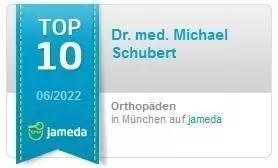Neurostimulation
What is Spinal Cord Stimulation
The stimulation of the posterior strands of the spinal cord can be an effective therapy option for painful diseases (chronic herniated disc, back pain, neck pain), which are otherwise difficult and often insufficient to treat. The method is by no means a new invention. It has been used successfully for more than 40 years.
What is treated?
It is used to treat both neuropathic back pain, i.e. back pain caused by the nervous system itself, and non-neuropathic back pain, which has its cause outside the nervous system. This can be, for example, back or neck pain after breast surgery, groin surgery, disc surgery, spinal surgery, so-called "failed back surgery", post nucleotomy syndrome or phantom pain after amputation or complex regional pain syndrome (CRPS; synonym also M. Sudeck or reflex dystrophy). These diseases are primarily treated conservatively. Drug and physical therapy methods are used here, but also psychological/psychotherapeutic and psychiatric forms of therapy in an individual combination. Nevertheless, only about 30-40% of patients with neuropathic pain can be treated satisfactorily conservatively. Although the method has been known and used for a long time, meaningful studies for specific indications have only recently been presented. Whether the method is suitable for you can be clarified in a personal conversation with us at the apex spine center.
What does the procedure include?
An advantage of this method is that no major surgical intervention under general anesthesia is required to place the required electrode over the spinal cord. This is inserted into the spinal canal via a cannula under local anesthesia. With the system from St. Jude Medical that we mainly use, it can be used for classic tonic stimulation, in which the electrical impulses trigger a tingling sensation in the affected area, which in most cases is felt to be pleasant. On the other hand, the so-called burst or high-frequency stimulation is possible, with which no or at most very little tingling sensations occur. Under certain circumstances, even better pain reduction can be achieved by combining both variants.
What follow-up treatment and rehabilitation is required?
The stimulation unit implanted under the skin only needs to be replaced about every 10 years. The battery usually has to be charged externally, through the skin, once a week. Handling the SCS after implantation is relatively easy for the patient. All patients receive intensive instruction here. A special further physiotherapeutic after-treatment is not necessary.


